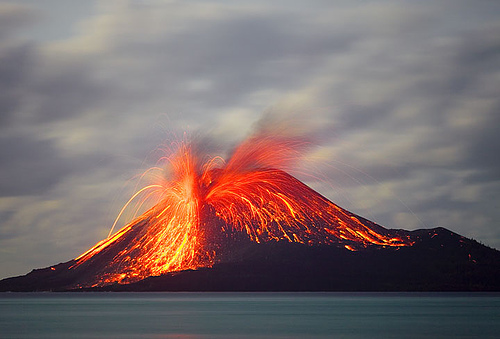Historia eruptiva del Krakatoa (Indonesia) mañana viernes 26 en Ciencia compartida
25 Octubre 2012
- Compartir en Linkedin
- Compartir en Facebook
- Compartir en las redes:
 Eruptive history of the Krakatau volcanic complex, Indonesia (Historia eruptiva del Krakatoa -Indonesia-), es la conferencia extraordinaria que Valentin R. Troll ofrece mañana viernes 26 de octubre dentro del 2º ciclo de Ciencia compartida. Val Troll trabaja en el Department of Earth Sciences, Center for Experimenteal Mineralogy Petrology & Geochemistry (CEMPEG), Uppsala University, Suecia.
Eruptive history of the Krakatau volcanic complex, Indonesia (Historia eruptiva del Krakatoa -Indonesia-), es la conferencia extraordinaria que Valentin R. Troll ofrece mañana viernes 26 de octubre dentro del 2º ciclo de Ciencia compartida. Val Troll trabaja en el Department of Earth Sciences, Center for Experimenteal Mineralogy Petrology & Geochemistry (CEMPEG), Uppsala University, Suecia.
The 1883 eruption of Krakatau is one of the best known volcanic events in the world, although it was not the largest, nor the deadliest of known eruptions. However, the eruption happened in a critical moment (just after the first global telegraph network was established) and in a strategic place (the Sunda Straits were a naval traffic hot spot at that time). The lecture will explore these events in some detail before presenting an outline on ongoing multidisciplinary efforts to unravel the past and present day plumbing systems of the 1883 eruption and that of the active Anak Krakatau cone. A mid- and a lower-crustal magma storage level exist beneath the volcano, placing significant emphasis on magma-crust interaction in the uppermost, sediment-rich crust. This final aspect shares similarities with the 2011/2012 El Hierro eruption, highlighting the relevance of the interaction between ascending magmas and marine deposits that oceanic magmas have to pass. At Krakatau, shallow-level crustal contamination offers a possible explanation for the explosive nature of the 1883 eruption and also for those of the presently active Anak Krakatau edifice and helps constrain location, style and processes of subvolcanic magma storage.
